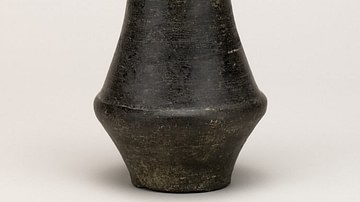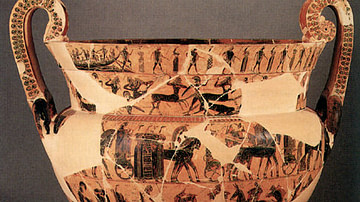Server Costs Fundraiser 2024
Illustration
Red-figure calyx-krater (mixing jar), c. 460-450 BCE, painted in Attica, Greece, and found in Altamura, Italy, attributed to The Niobid Painter.
The Pandora Vase is named after the top frieze of side A, which shows the creation of Pandora, the first woman according to ancient Greek mythology. Pandora was made by Hephaestus to carry out Zeus’ will by bringing misery to men with her pithos jar containing pains and trials. Nevertheless, the gifts she received from all the gods - hence her name pan (= all) plus dora (= gifts) – prepared her for a different purpose. Pandora received stunning, irresistible beauty from Aphrodite and a bold and cunning spirit from Hermes. These gifts suggest that the main reason for Pandora’s creation was to put men into torment with the fire of love, a fire fiercer and hotter than the one Prometheus had stolen from the gods for humanity. Her birth, therefore, is primarily associated with the introduction of pleasure and delight, both in love affair and in its outcome, namely family and children, to human life.
This reading of the story underlines the artist’s plan for the decoration of this vase. All four friezes painted on this vase reflect how heaven and earth plunge into joy and celebration on Pandora’s deliverance to the world. The top frieze of side A illustrates the instance when the gods have given their gifts but for Athena, who brings forward the last wreath to adorn Pandora. She stands still like a marble statue in the middle, while Poseidon, Zeus, and Iris on the right and Hera on the far left are looking on. Below, a group of young men dressed as satyrs dances to the music of a flute-player. More dancing takes place on the back of the vase, where a second flute player is surrounded by six dancing women.
(The British Museum, registration number 1856,1213.1)
References
- A New Pandora Vase, accessed 9 Nov 2020.
Cite This Work
APA Style
Museum, T. T. o. T. B. (2020, November 09). Pandora Vase. World History Encyclopedia. Retrieved from https://www.worldhistory.org/image/13056/pandora-vase/
Chicago Style
Museum, The Trustees of The British. "Pandora Vase." World History Encyclopedia. Last modified November 09, 2020. https://www.worldhistory.org/image/13056/pandora-vase/.
MLA Style
Museum, The Trustees of The British. "Pandora Vase." World History Encyclopedia. World History Encyclopedia, 09 Nov 2020. Web. 26 Jul 2024.
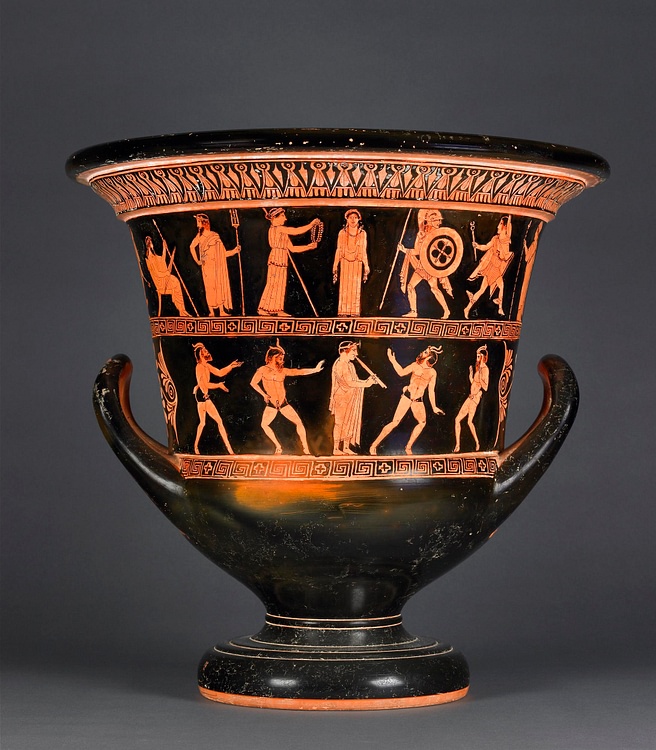
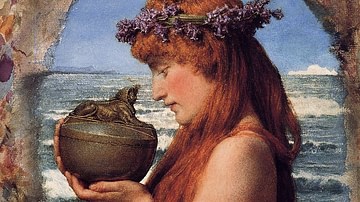
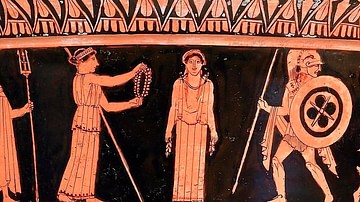
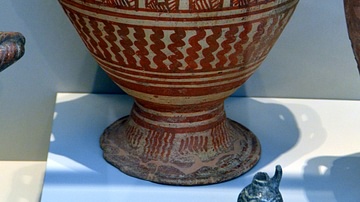
![Warka Vase [Bottom Register]](https://www.worldhistory.org/img/c/p/360x202/10536.jpg?v=1599153304)
